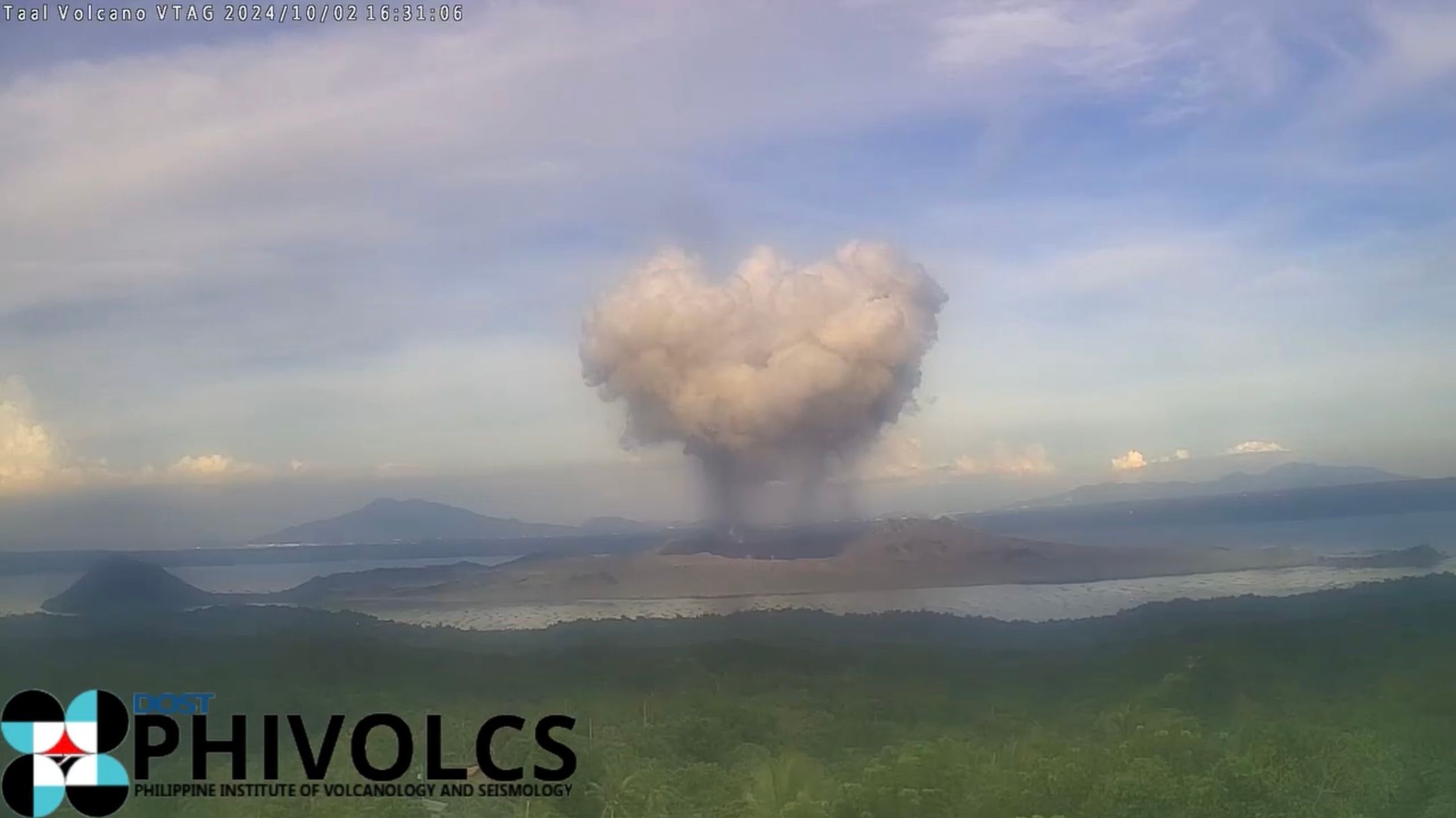Taal Volcano remains under Alert Level 1 amid a phreatomagmatic eruption — Phivolcs

The Philippine Institute of Volcanology and Seismology (Phivolcs) reported a minor phreatomagmatic eruption at Taal Volcano on Wednesday afternoon, Oct. 2.
The eruption started at 4:21 p.m. and ended at 4:32 p.m.
Phivolcs explained that a phreatomagmatic eruption is “a very violent eruption due to explosive contact of erupting magma with water.”
The event produced a short black jetted plume, followed by a steam-rich plume that rose up to 2,400 meters above the Taal Main Crater before drifting northeast, Phivolcs said.
Prior to this, a total of 18 phreatic or steam-driven events had been recorded since Sept.22.
“The phreatomagmatic event was likely driven by the sudden contact of water with a small branch of shallow magma that has been in place beneath the Taal Main Crater and has been degassing sustained levels of SO2 for the past three years,” Phivolcs explained.
However, it noted that the background levels of volcanic earthquake activity and ground deformation detected at Taal indicate that unrest is unlikely to progress into a major magmatic eruption at this time.
Phivolcs said Alert Level 1 is still in effect for Taal Volcano, which has been under this alert status since July 11, 2022.
Under Alert Level 1, sudden steam-driven or phreatic explosions, volcanic earthquakes, minor ashfall, and lethal accumulations or expulsions of volcanic gas can occur and threaten areas within the Taal Volcano Island (TVI).
Furthermore, Phivolcs said the degassing of high concentrations of volcanic SO2 continues to pose significant long-term health risks to communities surrounding Taal Caldera that are frequently exposed to volcanic gases.
It strongly advised against entry into TVI, Taal’s permanent danger zone, particularly near the Main Crater and the Daang Kastila fissure.
Local government units are also encouraged to monitor their communities’ preparedness and implement appropriate measures to mitigate risks associated with long-term degassing and related phreatic activity.